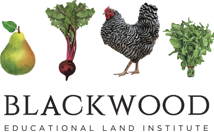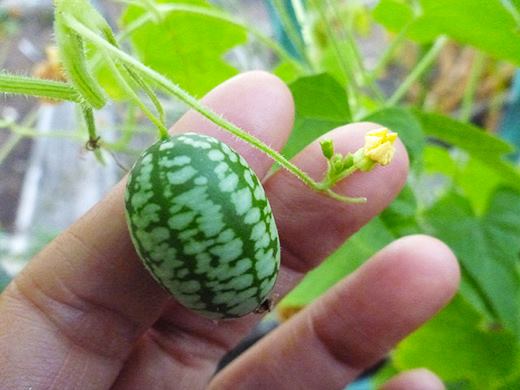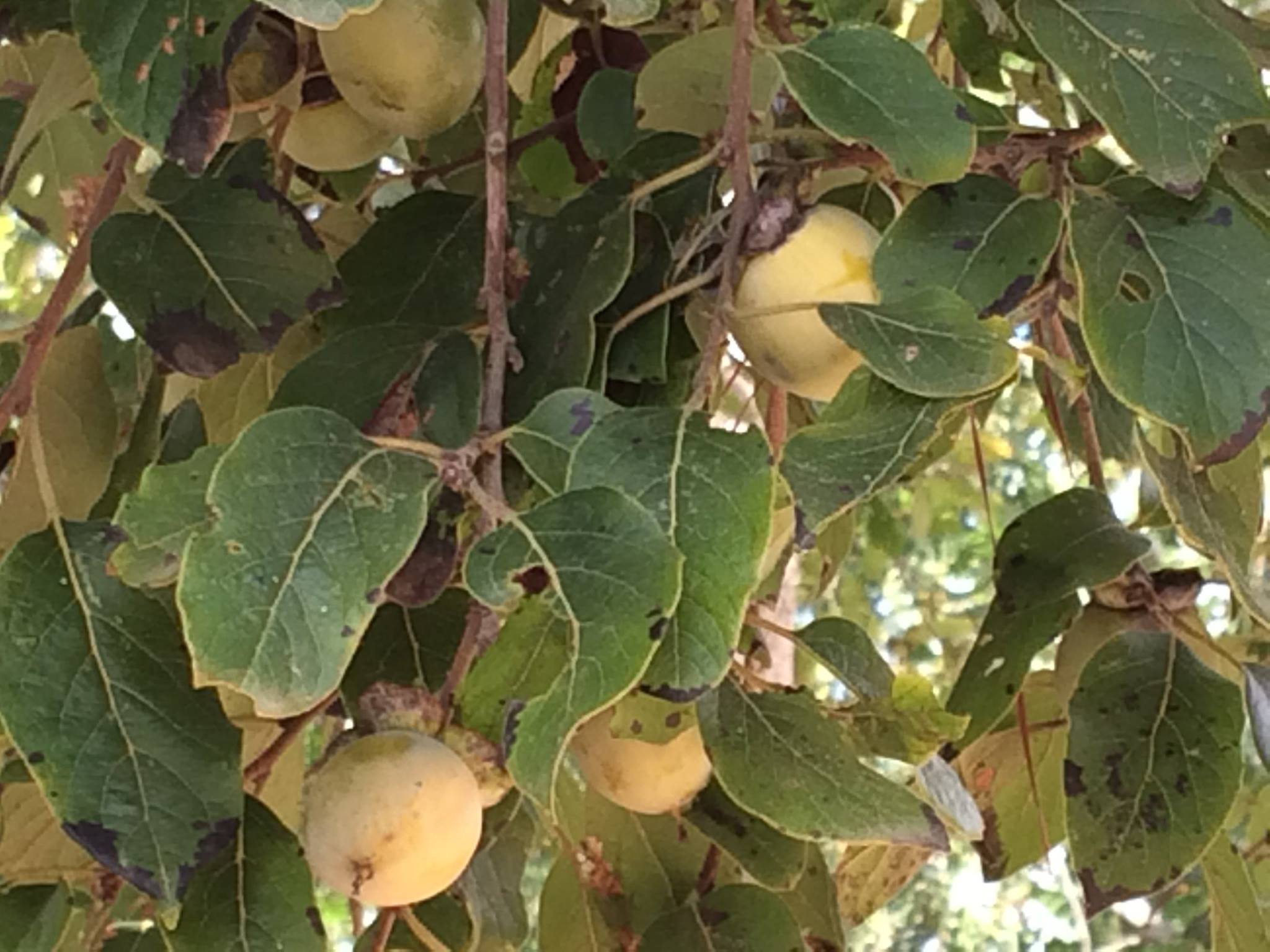By Hans Hansen
Temperatures finally slipped into a cool glide this week, along with a soaking rain that brought a vibrant green to pastures and landscapes, perhaps one last time. Cruising the country roads of Montgomery, Waller, Washington and Austin Counties, I couldn’t help but note the native bounty (food, fiber, medicinal plants) of the season was at or near harvest stage.
Many years ago, Fall was the time I would teach one of two (other was Spring) ambitious useful native plant identification and wild foods cooking classes. These were most often weekend long workshops, beginning on Friday night and ending on mid-day Sunday. I would forage, collect and store native foods and specimens months ahead of time to provide a rich hands-on native plant intensive ending in a wild food feast for Sunday lunch. Sunday morning, the kitchen and dining area were full of busy people preparing wild foods and dishes, yummy aromas wafting from the kitchen.

The melon’s most common name in Spanish is “sandíta” (little watermelon). In Mexico and Central America, the Mexican gherkin fruit is often used in nonculinary ways, including in medicine.
I studied with a number of native plant teachers, some of them were food and utility people, others were strictly native medicinal plant herbalists, some were just botany and native plant geeks. Blackwood founder Cath Conlon co-taught a good number of those classes and workshops with me, in Texas, some in other states. We were both students of Scooter Cheatham. My main native plant mentor was Elizabeth Rice Winston, who I co-taught with as well. I also learned from Tom Brown, Tuscon herbalist, Jesse Anderson, who was mentored by Michael Moore (Medicinal Plants of The Mountain West). Jesse and I spent weeks wandering off the main trails of the Mountains of New Mexico and Arizona, days making herbal preparations from those wild plants.
Cath and I also co-taught a number of permaculturesque classes (we had our own hybrid class, we didn’t call them permaculture) that involved native useful plants. Cath’s permaculture mentor is Ben Haggard (Regenis Group), Bill Mollison was my my teacher.
What seems to be missing from commercial approaches to agriculture is an in depth understanding and therefore appreciation and use of native species. Permaculture creates a great context for including, weaving these into a developed and well thought out farming system that utilizes the best of the natural and human food systems. Holistic Management also offers a great template for native plants, encouraging native diversity in farm and food systems, as well. HMI is a complementary approach to permaculture that provides much more practical / business guidance and template for sustainable / ecological commercial agriculture.
Permaculture can also provide a useful template for commercial agriculture, used creatively, but is probably a better model for a self-contained homestead. For example, once products are sent off site, the raw components that produced those products must be replaced – hence the point of ecological and other stress begins. Permaculture is not about maximizing the input / output aspect of food production for market growing, or managing the ecological stress that results from it, at least in my take, what I’ve been taught.
Hybridize HMI and permaculture, and the best of other systems (there are many) and you’re starting to create a new paradigm – go for it. I’ve never been good at following recipes myself, or repeating the same recipe twice the same way, no matter how good they are, new ideas are always coming to mind.
None-the-less, if you’re set on a permaculture framework as for a commercial food production endeavor, the framework is in place with permaculture (add a little creative thinking) in that the more intensive (input-output) oriented food activities, the ones that require more attention and energy to maintain, are located in the inner zones 1, 2 and 3 (house is zone 0). Outer zones 4 and 5 are perfect for native food, utility and medicinal flora.. These outer, less managed / disturbed zones, should be designed with maximum native diversity, that provide valuable habitat and food for native fauna, including native pollinators. In other words, these zones serve multiple functions, and two basic functions are 1) food, medicine and utility insurance through innate resilience 2) they provide food and habitat for wildlife . Food when humans aren’t harvesting it (native fruits, berries, nuts etc.) Particularly in areas close to larger urban centers, such as Houston, zones 4-5 address serious habitat fragmentation issues that are likely to become much more severe in the next couple decades. It is in our best interest to do our utmost at keeping elements of our ecosystems intact.
The outer zones can feasibly be more intensively managed in a mixed scheme, say with a mixture of wild species areas and domestic commercial orchards or field crops. Of course, domesticated species can be integrated into what are primarily native guilds and vice versa. For example, if you stroll through wild areas near citrus groves in Florida you’ll see feral domestic citrus growing in the understory.

Taking a bite out of the Turk’s Cap apple. Kind of looks like a miniature apple doesn’t it? Except the seeds aren’t quite in scale.
We will borrow from this example by planting citrus in our post oak belt between the Kitchen Garden and the meeting hall this year (zone 1-2ish), turning it into a mixed native and domestic food forest. The very large and old post oaks have been dying steadily over the last 15 years from vacillations of drought-extreme wet and stress related fungal disease (my assessment of causal relationships). Post oak is a keystone species, and as they die, the canopy opens, their understory associations are in a state of disarray.
Thus, we are stepping in to co-create a kind of contrived replacement guild of mixed flora. Overstory natives: long needle pines, black jack oak, sweet gum; understory: dogwood, bay laurel, citrus. Edge species: Mexican and Chickasaw plum, farkleberry, red bud and parsley hawthorne at the edges, among other species as understory / edge: chiltepin, turks cap, Jerusalem artichoke and native sunflower, American Beautyberry, sassafras, yaupon holly and others.
Spring and Fall are fabulous times for putting up wild bounty for the year, it’s what the indigenous people of Texas, our region did as a matter of life rhythm. They knew when the staples were ready for harvest: mesquite, pecans, white oak species of nuts, sotol, agave, and on the move they were, with the seasons, harvesting, preparing and putting up at their favorite harvest sites, gleaning a diversity of plant species, hunting and trapping game on the way. This was their daily work, their life.
Native plant foods fibers and medicines, that reside in the outer zones, do require a bit more work to prepare the harvest for use, but the extra work after harvest is made up by the fact they require little to work before harvest: they are self-perpetuating (in a good plan), require no tillage, planting, weeding, watering or pesticide – just harvesting and processing, once the species and their associations are established (aka “guilds”, stacked plantings, as in a food forest design).
The original human inhabitants of Texas, the SW, harvested, processed and put away in underground storage pits, for the leaner harvest seasons. They hunted, collected fibers, medicines, made clothing, shelter, spent time on other tasks of life, and of course in ceremony and cultivating a vibrant communal cultural and spiritual life.
Native plants are the most resilient food, fiber and medicinal resources available to us and are perfect outer zone species in a permaculture land design.
When we talk of sustainable food our native bounty is often absent from our conversation. These are the most genetically proven resources we have, they sustained the early inhabitants of Texas very well, The Caddo Indians of East Texas, for example, built a vibrant culture, you could say an empire, from the natural opportunity here of natural assets of climate/ecology and human culture mixed. They had a vibrant early agriculture based on landrace food varieties, specifically adapted, through natural and intentional selection, to the area from seeds brought from Central Mexico and beyond, and the natural bounty of the area. Unfortunately, the early Europeans didn’t see the value in these crops, therefore didn’t pay much attention.

Burr Oak acorn, Large, meaty and sweet. I’ve seen them twice the size of a golf ball. They do require a bit of processing to remove tannic acid though not as much as other oak species. Burr Oak grows well in the heavy black gumbo soil of the Blackland Praires and Houston. Photo taken in Austin County.
How the Caddos, and other native agricultural cultures, managed this zone of bounty between native (un- managed native to domesticated species) of our region has much yet to teach us. Unfortunately, big pieces of this historic lesson are lost.
I’ve captured a bit of the native and naturalized seasonal bounty at Blackwood and in my trips to neighboring counties during the week (Burr Oak, Citrus in Austin Co.). fall native or naturalized bounty available for harvest. I am in the process of integrating much of this bounty into a permaculture landscape design template.

American Beautyberry. It’s an attractive landscape plant. The fruit are edible, have been used to make jellies and jams.
Fall Harvested Food Staples:
– Arrowhead (water plant – tubers late Fall/Winter, leaves in Summer)
– Black Walnut
– Jerusalem Artichoke (after first frost – roots)
– Live oak (acorns, late October/November)
– Mesquite beans (September, October)
– Prickly Pear (August, September)
Other Foods, Fibers, Medicines Harvested in Fall:
– Amaranth (all year – young leaves, spring through fall – seeds)
– Bay Laurel (Fall – nuts, All year – leaves as spice)
– Chiltipin (Summer/Fall – berries)
– Dayflower (Fall through Spring, edible flower and greens)
– Canna Lily (naturalized plant; Fall/Winter – roots)
– Cattails (Something all year; Spring/Summer – shoots; Winter – roots, Spring – pollen and flowers); fluff used for insulation, fibers used for all purposes, stalks for thatch; can be invasive; appreciate if you have it)
– Chaste Tree (aka Vitex, medicinal berries for hormone regulation – Fall/Winter)
– Farkleberry (native blueberry, Fall through Winter)
– Parsley Hawthorne (native crabapple, November)
– Ginkgo (Summer – leaves as medicinal; Fall – edible seed)
– Golden Rod (Late Summer/Fall – leaves, flowers for tea; can be invasive, appreciate it if you have it, would not plant)
– Green Briar (All year – tendrils, hard roots roasted though recommend it mostly as tea; roots used to make briar smoking pipes)
– Lambs Quarters (our native quinoa grain, a close cousin; harvest all year – young leaves, spring through fall – washed seeds)
– Liatris/Gayfeather (Late Fall/Winter – roasted root as survival food)
– Pine (All year – needles (vitamin C), inner bark (aka pine noodles, survival food)
– Rose, Wild (Fall – hips and flowers; high in vitamin C)
– Sassafras (All year – roots, twigs, leaves; roots are best in winter)
– Sweet Gum (Fall – seeds, Spring – gum; leaves – medicinal used topically)
– Willow (medicinal, early source of aspirin)
– Yarrow (All year, valuable medicinal; used to seal wounds. It’s very effective)
– Yaupon Holly (All year – leaves are roasted to make a caffeinated beverage; our native Yerba Mate, a close relative; Karankawa Indians of the area used it for an interesting ceremony for which the botanical name Ilex vomitoria came; berries are NOT EDIBLE)


